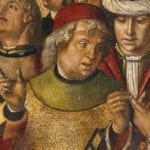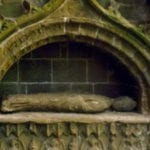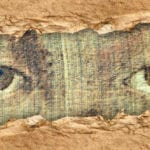 Creepy
Creepy  Creepy
Creepy  Technology
Technology 10 Scientific Breakthroughs of 2025 That’ll Change Everything
 Our World
Our World 10 Ways Icelandic Culture Makes Other Countries Look Boring
 Misconceptions
Misconceptions 10 Common Misconceptions About the Victorian Era
 Mysteries
Mysteries 10 Strange Unexplained Mysteries of 2025
 Miscellaneous
Miscellaneous 10 of History’s Most Bell-Ringing Finishing Moves
 History
History 10 Great Escapes That Ended Right Back in Captivity
 Weird Stuff
Weird Stuff 10 Fascinating Things You Might Not Know About Spiders
 Food
Food 10 Everyday Foods You Didn’t Know Were Invented by the U.S. Military
 History
History 10 Odd Things Colonial Americans Kept at Home
 Creepy
Creepy 10 More Representations of Death from Myth, Legend, and Folktale
 Technology
Technology 10 Scientific Breakthroughs of 2025 That’ll Change Everything
 Our World
Our World 10 Ways Icelandic Culture Makes Other Countries Look Boring
Who's Behind Listverse?

Jamie Frater
Head Editor
Jamie founded Listverse due to an insatiable desire to share fascinating, obscure, and bizarre facts. He has been a guest speaker on numerous national radio and television stations and is a five time published author.
More About Us Misconceptions
Misconceptions 10 Common Misconceptions About the Victorian Era
 Mysteries
Mysteries 10 Strange Unexplained Mysteries of 2025
 Miscellaneous
Miscellaneous 10 of History’s Most Bell-Ringing Finishing Moves
 History
History 10 Great Escapes That Ended Right Back in Captivity
 Weird Stuff
Weird Stuff 10 Fascinating Things You Might Not Know About Spiders
 Food
Food 10 Everyday Foods You Didn’t Know Were Invented by the U.S. Military
 History
History 10 Odd Things Colonial Americans Kept at Home
10 Bizarre Shrines To Religious Figures
Let’s face it—we have some weird ways of paying tribute to those we put on pedestals. For true believers, religious figures can be the ultimate in morality, and we admire the lives they led and the ways they’ve stood up for their beliefs. And how do we demonstrate that? We display their body parts, we display their corpses, and we even build housing complexes in their likenesses.
10 Saint Roch Chapel
New Orleans, USA
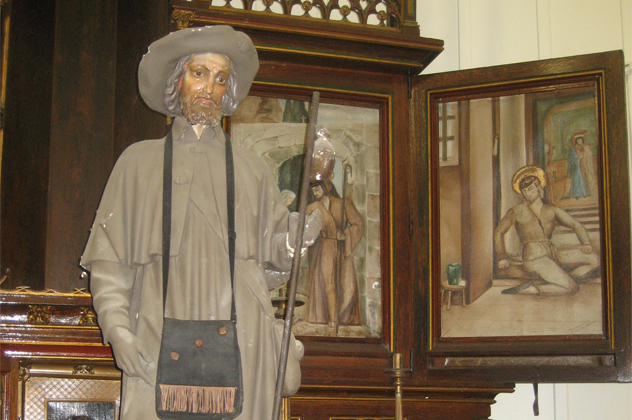
St. Roch was born in France near the end of the 13th century. Said to have been born with a red cross on his chest, he lost his parents at the age of 20. St. Roch gave away his family fortune and headed to Italy, and on the way he traveled through town after town that had been stricken by the plague. After spending time caring for plague victims, he was said to repel the plague with simply his presence.
When yellow fever gripped the United States’s Gulf Coast in the 1800s, St. Roch was the logical person to pray to. Reverend Peter Thevis prayed that his congregation would escape the plague; when the disease passed without harming a single person, he had a Gothic cathedral constructed in the saint’s honor. People still pray for healing and protection today, and a bizarre tradition has grown up around the chapel.
When someone who has prayed to the saint recovers from their illness or affliction, they bring a token to leave at the chapel. There’s a small side room, just alongside the main altar, where many people leave something illness-related that they no longer need. The resulting bizarre medical and anatomical mash-up of offerings includes polio braces, glass eyes, crutches, prosthetic limbs, and a wide variety of medical supplies.
9 Amiens Cathedral
Amiens, France
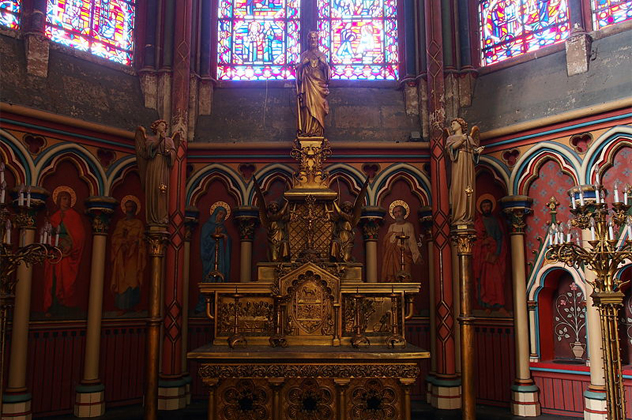
Amiens Cathedral is a 13th-century Gothic church in France. Not only is it the country’s largest cathedral, but it boasts an impressive claim to fame—the head of St. John the Baptist. Precisely, it houses the front part of a skull, minus the jaw. There’s also a distinctive, unmistakeable hole in the skull, supposedly cause by Heriodas, who stabbed the severed head in the forehead after having the saint murdered.
According to the story, the head remained in the custody of his murderer for many years. The details of the story get confused, but John the Baptist reportedly appeared in a vision to a man named Marcellus, telling the abbot where to find the remains of his severed head. It was installed in a church for some time, moved, and lost again.
Supposedly John the Baptist appeared once more to someone in a dream, pointing them to his head—this time, it was in Constantinople, where it remained for several centuries until it was discovered (or stolen) by a Crusader who took it to Amiens. The Crusader, a man named Walon de Sarton, also claimed to have found St. Christopher’s head and St. Eleutherius’s arm. It’s also worth noting that Amiens Cathedral was built at the relic’s arrival in France, and much of the money and resources needed to build the massive cathedral came from the popularity of the relic and the desire for it to have an appropriate resting place.
8 Buddha’s Nostril
Nara, Japan
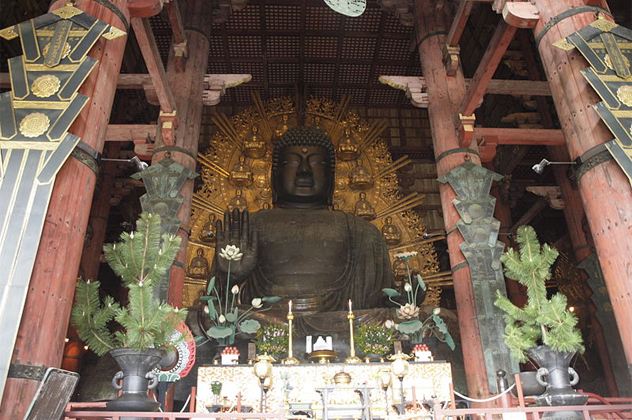
Todaiji, or the Great Eastern Temple, is a massive, breathtaking Buddhist Temple located in Nara, Japan. Original construction dates back to 752, and the main hall is the world’s largest wooden building. The temple you can currently visit is actually a reconstruction, built in 1692—and it’s only about two-thirds the size of the original building. It’s home to a 15 meter (49 ft) bronze statue of Buddha that contains 129 kilograms (286 lbs) of gold and 437 tons of bronze.
As impressive as the statue is, it’s a small, unassuming addition that’s an easily overlooked and bizarre addition to the temple. If you walk behind the statue, there’s a massive wooden pillar with a hole through it. Popular legend says that this is where the temple gets interactive. The hole in the pillar is supposed to be the same size as the statue’s nostril, and if you manage to fit through it, you’ll undoubtedly gain enlightenment.
7 Waldsassen Basilica
Waldsassen, Germany
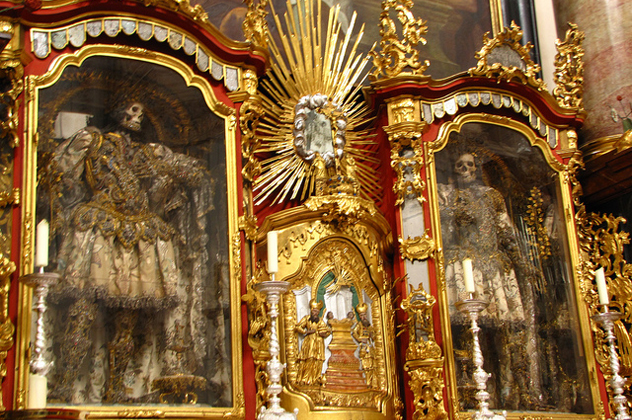
Visit Waldsassen Basilica in Bavaria and you’ll be greeted by 10 unsettling figures. The church is home to 10 skeletons, all extremely well preserved, and all clad in rich fabrics and jewels. One of the figures is supposedly the remains of St. Valentinus, and he was elaborately dressed by one of the world’s most noted skeleton decorators, a monk named Adalbart Eder.
The Walsassen Basilicia skeletons are odd and unsettling, but they’re not alone. There’s only a relative handful that remain as a reminder of a practice that was once widespread and very economically successful. In 1578, a catacomb was discovered beneath Rome. It housed between 500,000 and 750,000 skeletons, and based on estimates on when the catacombs were dug and filled, the Vatican decided that the remains must be of those who were persecuted for their Christian beliefs. And that meant some of them were saints and martyrs—clearly, those bodies should be honored, revered, and preserved.
Those that were found with signs of martyrdom (a carved “M” nearby, or a vial of something that might have been blood) were sold to churches across Europe. Nuns and monks clad the skeletons in jewels and fine cloth, and they came to be revered in the towns where they finally came to rest. Many were lost in the 18th century, when those who were not absolutely able to be identified as actually being the remains of a saint were destroyed. There are still surviving examples of this rather creepy art form, including Saint Munditia in Munich and, of course, the 10 martyrs in the Waldsassen Basilica.
6 The Parisian Charcutiers’ Chapel
Paris, France
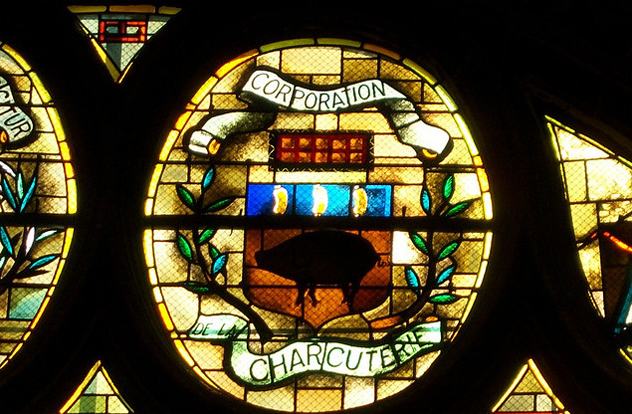
The Saint Eustache Church in Paris is a breathtaking example of Gothic architecture that just happens to also pay homage to another part of Paris’s long and colorful history—the Les Halles meat markets. Since 1181, the meat market had been located right next to the church, and over the centuries it had grown right up against the church walls.
In 1969, the market, deemed undesirable and unsanitary, was moved to the south of Paris. But that wasn’t the end of the market making its presence felt in the church. British sculptor Raymond Mason created a bas-relief for a new part of the church—the Parisian Charcutiers’ Chapel. Surrounded by stained glass and reliefs of other religious figures is now a tribute to the pork butchers and pork products that have long been an important part of French street life and cuisine.
A stained glass window in the church proudly displays the charcutiers’ coat of arms, and also features Saint Antoine presenting a priest with a bright pink piglet and a tray of tasty pork products.
5 Shrine Of St. George
Beit Jala, Israel
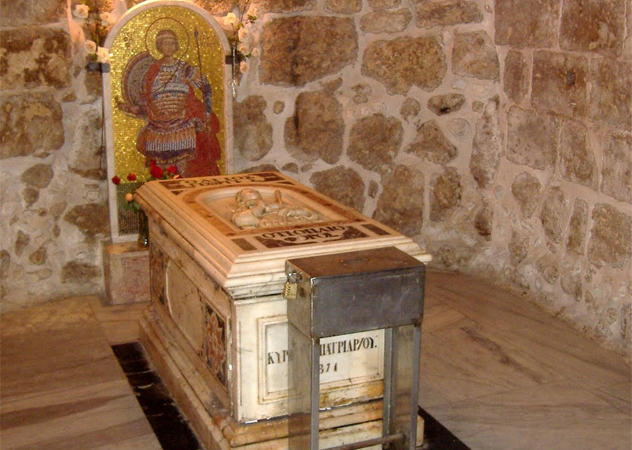
Beit Jala is a relatively small town near Bethlehem. During the crusades, knights and warriors took their patron saints with them, including St. George. In Europe he’s known mainly for slaying the infamous dragon, but in the Middle East he’s mainly associated with agriculture and a good harvest. He was also adopted by the Muslims, who came to know him in much the same way. So it’s not entirely surprising that a shrine was erected in his honor outside of Bethlehem; what’s bizarre is that the shrine was also an insane asylum.
Beneath the brightly painted images of the saint and his deeds, people who were deemed insane were chained to the walls, where they were left for forty days to survive on bread, water, and readings from the Gospel. Extreme cases of insanity were also treated with whippings and beatings. Records of this exist as recently as 1907, though the practice and use of the chapel as an asylum has been stopped.
4 Tomb Of Daniel
Samarkand, Uzbekistan
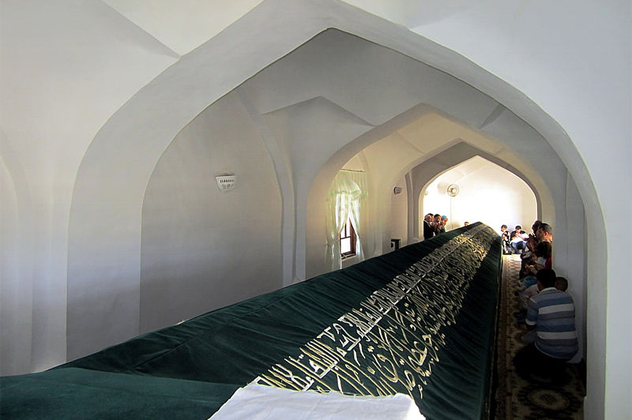
St. Daniel’s Tomb in Samarkand, Uzbekistan, is a simply constructed mausoleum with a rather unusual final resting place for the saint. While the building itself is simple and elegant, the real oddity is the structure that is said to hold the remains of the saint. It measures 1.5 meters (5 ft) high and 1.5 meters (5 ft) wide, but its length stretches for a whopping 18 meters (59 ft). That’s because the saint inside is said to be still growing. There are a couple different stories associated with the tomb, including the story of how Daniel came to be moved from his original resting place in Susa, Iran.
When siege after siege against the city failed, the rumor spread that it was under the protection of the saint. When the siege finally ended, the remains were moved to a shrine in Samarkand, where they continued to grow. Unfortunately, the saint’s growth has since been “halted” by order from the Russian government. Other legends say that the tomb contains only an arm that has continued to grow, and one very practical explanation for the size of the tomb is that it’s merely to hide where the remains are actually buried to protect them from grave robbers.
3 Wat Khunaram
Koh Samui, Thailand
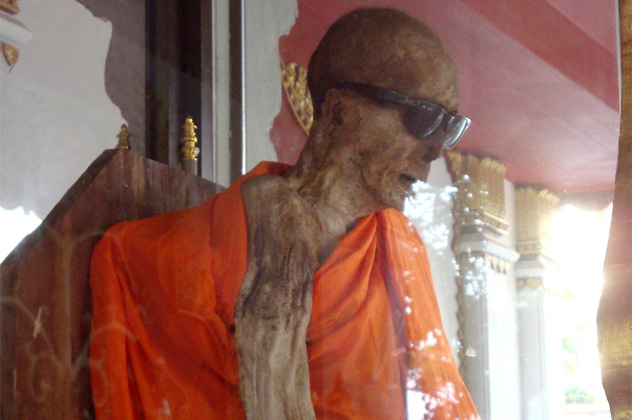
Wat Khunaram is a Buddhist temple on the island of Koh Samui in Thailand. Enshrined in the temple is the mummified body of a monk named Luang Por Daeng, who passed away in mid-meditation in 1973. The body is remarkably preserved, and those who visit the temple can also visit this monk, as his wishes included being cremated should his body begin to decay, or being enshrined on public display should his body persist. Known in life for his ability to practice and teach meditation techniques, he wished to be displayed as a reminder of the life, death, and middle path of Buddhist teachings.
When some visitors took exception to the empty eye sockets, temple monks added sunglasses to his body. Another notable addition is the presence of a lizard colony; scans and X-rays of his body reveal that geckos have moved into his remains, laying eggs and hatching beneath his skin. Other than that, the body isn’t just in the same position he was in when he died—dentures, organs, and tissues are also relatively well-preserved.
2 Phra Nang Cave
Krabi, Thailand
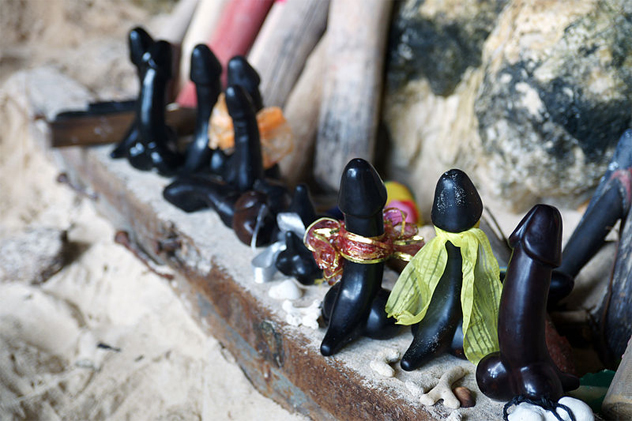
Railay Bay, Thailand, is a breathtakingly beautiful area of the country with white, sandy beaches and epic examples of stalactites and stalagmites. It’s also the sites of a cave where Phra Nang, a princess sea goddess, is said to live. There are a few different stories associated with her, including one where she was the wife of a local fisherman who never returned from a sea voyage, and she waits and watches from the cave for his return. In other legends, she’s the spirit of an Indian princess who was drowned in a shipwreck.
Regardless of who she once was, she’s now a favorite of fishermen, and apparently she’s a huge fan of phallic symbols. Those who want to ensure a safe sea voyage bring carvings of phallic symbols—some several feet tall—and leave them at her shrine. Alternately, the carvings, known as lingams and closely associated with Shiva, are said to automatically float to the cave entrance no matter where they’re cast into the sea. So if you can’t make it to the cave, which is only accessible by boat, casting your offering into the sea at high tide will suffice.
1 Quetzalcóatl’s Nest
Naucalpan, Mexico
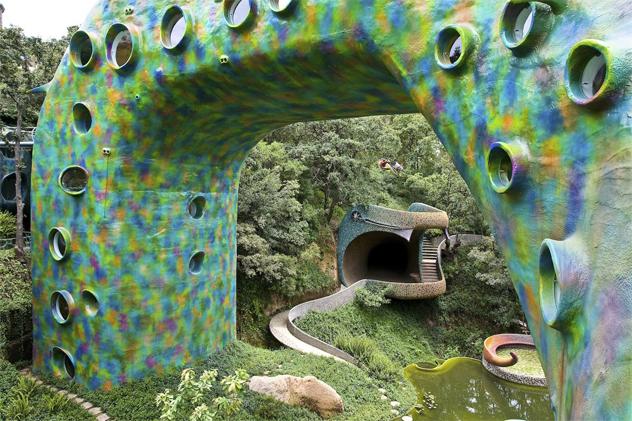
Quetzalcoatl was a feathered serpent god from Aztec mythology. Revered for his knowledge, he was the symbol of death and rebirth, the inventor of the calendar and of books, and the father of mankind. While he’s no longer worshiped, he is paid tribute to in a bizarre structure that rises out of the Mexican landscape. Snaking in and out of the land, disappearing into mountains and reappearing on the side of valleys, is a massive housing complex built in the shape of the epic Aztec god.
The mouth of the serpent is a doorway and the spine of the serpent god is a hallway into different rooms. There are also storage facilities and a sewage treatment area that turns waste water into irrigation for the acres of gardens around it. The 5,029 square meter (16,500 sq ft) structure contains 10 apartments, and we can’t help but wonder what Quetzalcoatl himself would think of the structure.

